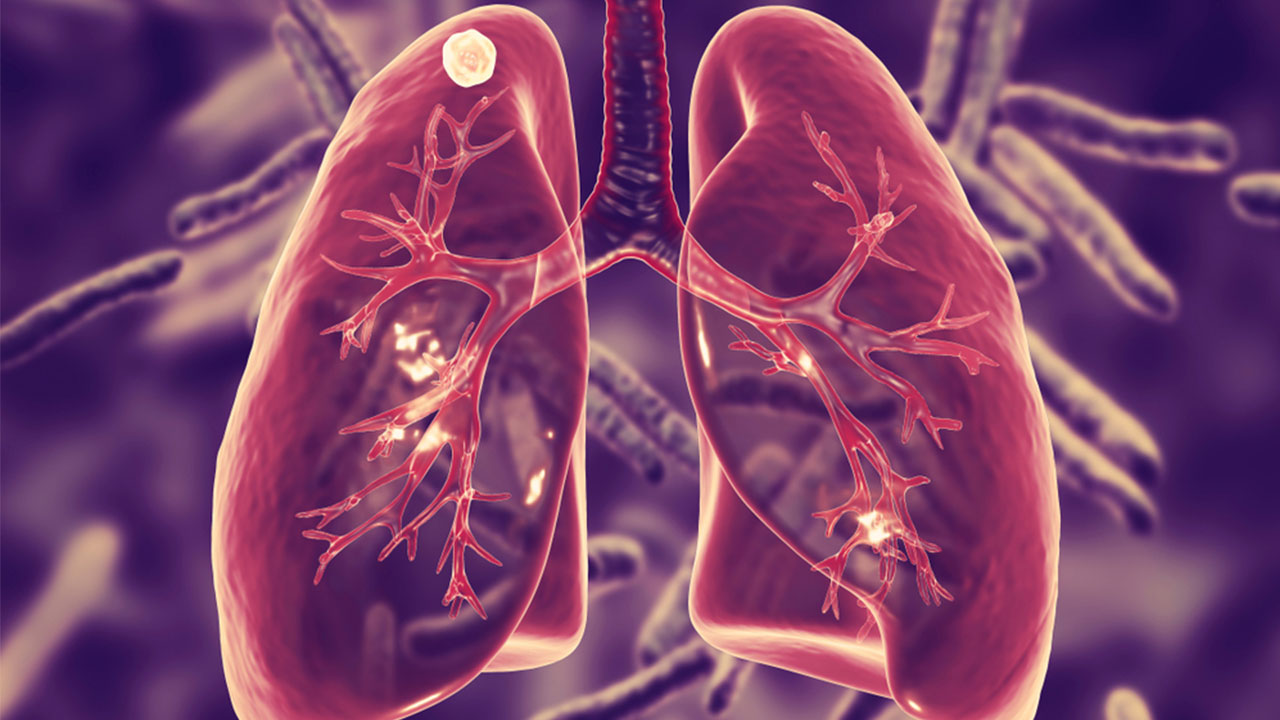What Causes Glaucoma, Plus Symptoms and Treatments
 By: by Amino Science
By: by Amino Science

Glaucoma is a group of eye conditions that lead to progressive damage of the optic nerve. The disease impacts approximately 2.3 million Americans and is one of the leading causes of blindness in the United States. Glaucoma often has no warning signs in the early stages and can strike anyone, regardless of age. Moreover, vision that’s lost due to this disease isn’t recoverable. Therefore, it’s important to understand what causes glaucoma and what you can do to protect your eyesight.
What Causes Glaucoma?
Glaucoma is generally the result of an imbalance between the amount of aqueous humor (fluid) produced within the eye and the amount that drains away. When less fluid is allowed to drain away, whether through too much being produced or a malfunction in the system designed to drain it, the intraocular pressure rises.
This buildup of fluid pressure results in more and more force being placed on the optic nerve, which permanently damages nerve fibers and leads to blind spots in the visual field. If this process is allowed to go on for too long, the optic nerve damage may be so extensive that vision is completely lost.
Interestingly, people with a condition known as ocular hypertension also have elevated intraocular pressure, but they don’t show signs of damage to the optic nerve or vision loss. And some forms of glaucoma aren’t even related to intraocular pressure.
As you can see, glaucoma is a complex set of conditions, which is one reason why there’s so many different types.
Types of Glaucoma
While there are a number of different types of glaucoma, most ophthalmologists divide them into two major categories:
- Open angle
- Closed angle
Open-Angle Glaucoma
Open-angle glaucoma is the most common form of glaucoma. It occurs when the trabecular meshwork—the eye’s drainage system—doesn’t allow fluid to drain adequately even though the drainage angle formed by the cornea and iris is open. This type of glaucoma progresses slowly—with initial vision loss affecting peripheral vision—and may be completely painless. Open-angle glaucoma also has a strong genetic component and is more common in Latinos and people of African descent.
Closed-Angle Glaucoma
Closed-angle glaucoma, which is also called angle-closure glaucoma or narrow-angle glaucoma, occurs when the iris obstructs the eye’s drainage angle, causing it to narrow or close completely. This type of glaucoma can progress gradually (chronic) over time or occur suddenly (acute). If the condition strikes suddenly, blindness can take place within hours, so this type of glaucoma is considered a medical emergency. Closed-angle glaucoma is seen most commonly in people of Asian descent.
Congenital Glaucoma
Sometimes glaucoma is seen in infants and young children as well. Such cases of developmental glaucoma may be due to abnormal development of the drainage angle or an underlying medical condition.
Secondary Glaucoma
There are also various types of secondary glaucoma, which can be either open- or closed-angle in nature. These types of glaucoma are considered “secondary,” as they occur secondary to another condition, such as injury to the eye, inflammation, use of steroids, advanced cataracts, or diabetes.
Normal-Tension Glaucoma
Normal-tension glaucoma, which is also known as low-tension or normal-pressure glaucoma, is a bit of a different animal in that it’s the result of damage to the optic nerve that occurs in the presence of normal intraocular pressure. While the exact cause of normal-tension glaucoma is still not clear, it’s thought to be related to an abnormally thin cornea or poor blood flow to the optic nerve. This form of glaucoma is more common in people of Japanese descent.

Glaucoma Signs and Symptoms
The signs and symptoms of glaucoma depend on the type of glaucoma present and how advanced the condition is. For example, most people with glaucoma experience no symptoms in the early stages. However, as the condition progresses, symptoms include:
- Blind spots in the peripheral vision
- Tunnel vision in advanced stages
Because acute angle-closure glaucoma is a medical emergency whose symptoms occur suddenly, the signs of this form of glaucoma are much more extreme and may include:
- Severe headache or eye pain
- Blurred vision
- Rainbows or halos around lights
- Eye redness
- Nausea and vomiting
As you can see, except in the case of acute closed-angle glaucoma, the symptoms of glaucoma can be insidious and have potentially disastrous results for vision. And, unfortunately, it’s estimated that 50% of people with glaucoma don’t realize they have it. That’s why early diagnosis and treatment are the best ways to preserve vision over the long term.
Glaucoma Risk Factors
Although anyone can develop glaucoma, certain groups are more at risk. Risk factors for the condition include the following.
- Age: People over the age of 60 are most at risk of developing glaucoma. However, the risk for those of African descent rises after age 40.
- Race: People of African, Asian, and Latino descent are more likely to have glaucoma than are members of other races.
- Family history: As glaucoma does have a genetic component, people with a family history have an increased risk of developing the disease.
- Medical history: People with certain medical conditions, including diabetes, high blood pressure, heart disease, and migraines, have a greater risk of developing glaucoma.
- Eye trauma: People who’ve suffered eye injuries after being hit or undergoing certain types of surgery are at increased risk.
- Steroid use: People who’ve used corticosteroids for long periods of time have a higher risk of developing glaucoma.
- Current vision: People who are extremely nearsighted or farsighted have an increased risk of glaucoma.
- Eye structure: People with thin corneas or optic nerve sensitivity have a greater risk of developing glaucoma.
Diagnosing Glaucoma
In order to diagnose glaucoma, your health care provider will review your medical history and perform a complete eye exam. Components of an eye exam may include:
- Tonometry: This exam uses an instrument called a tonometer to measure intraocular pressure.
- Gonioscopy: This test uses a lens called a gonioscope to view the drainage angle of the eye.
- Ophthalmoscopy: This exam uses a small device with a light on the end to evaluate the retina and optic nerve for signs of damage.
- Perimetry: This exam, which is also known as visual field testing, measures central and peripheral vision to check for areas of vision loss.
- Imaging: Optic nerve imaging is used to monitor the optic nerve fibers for signs of damage.
- Pachymetry: This exam uses a small probe called a pachymeter to measure the thickness of the cornea.
Glaucoma Treatment
While vision lost due to glaucoma can’t be restored, if caught in its early stages, there are ways to slow or even prevent further vision loss. The main methods for treating glaucoma are:
- Eye drops: Treatment of glaucoma often begins with prescription eye drops designed to reduce the pressure in the eye. These types of medications work by improving fluid drainage or decreasing the amount of fluid the eye makes.
- Oral medications: If eye drops aren’t successful in lowering intraocular pressure sufficiently, your health care provider may prescribe an oral medication as well. The medications most commonly prescribed for glaucoma are called carbonic anhydrase inhibitors.
- Surgical procedures: When medications aren’t enough either, your health care provider may recommend eye surgery as a way of improving fluid drainage. Surgical procedures offered for this purpose may include laser surgery to stimulate the trabecular meshwork, drainage flap creation, or drainage tube implantation.
In addition to medications and surgery, certain lifestyle and dietary changes may be helpful in controlling eye pressure and improving eye health. These include:
- Eating a diet rich in vitamins, minerals, and antioxidants
- Exercising regularly
- Limiting caffeine
- Using a wedge pillow to elevate the head
- Avoiding large amounts of fluid intake at one time
- Reducing stress
Protecting Your Vision
To help prevent vision loss from glaucoma, it’s important to have regular eye exams. According to the Glaucoma Research Foundation, exams should be performed:
- Every 2 to 4 years before the age of 40
- Every 1 to 3 years between the ages of 40 and 54
- Every 1 to 2 years between the ages of 55 and 64
- Every 6 to 12 months after the age of 65
And if you have risk factors for glaucoma, you should have an eye exam every 1 to 2 years beginning after age 35.
Approximately 2% of people between the ages of 40 and 50 and 8% of people over the age of 70 suffer from high eye pressure. Moreover, many individuals are unaware that elevated intraocular pressure can lead to glaucoma. That’s why it’s so important to see your eye doctor regularly.
And if you’ve already been diagnosed with glaucoma or have factors that put you at risk for the condition, be sure to follow your health care provider’s recommendations because there may be no way to prevent glaucoma, but with early detection, appropriate treatment, and regular follow-up, it’s possible to prevent further vision loss.

Up to 25% off Amino
Shop NowTAGS: conditions
Join the Community
Comments (0)
Most Craveable Recipes




 833-264-6620
833-264-6620



















